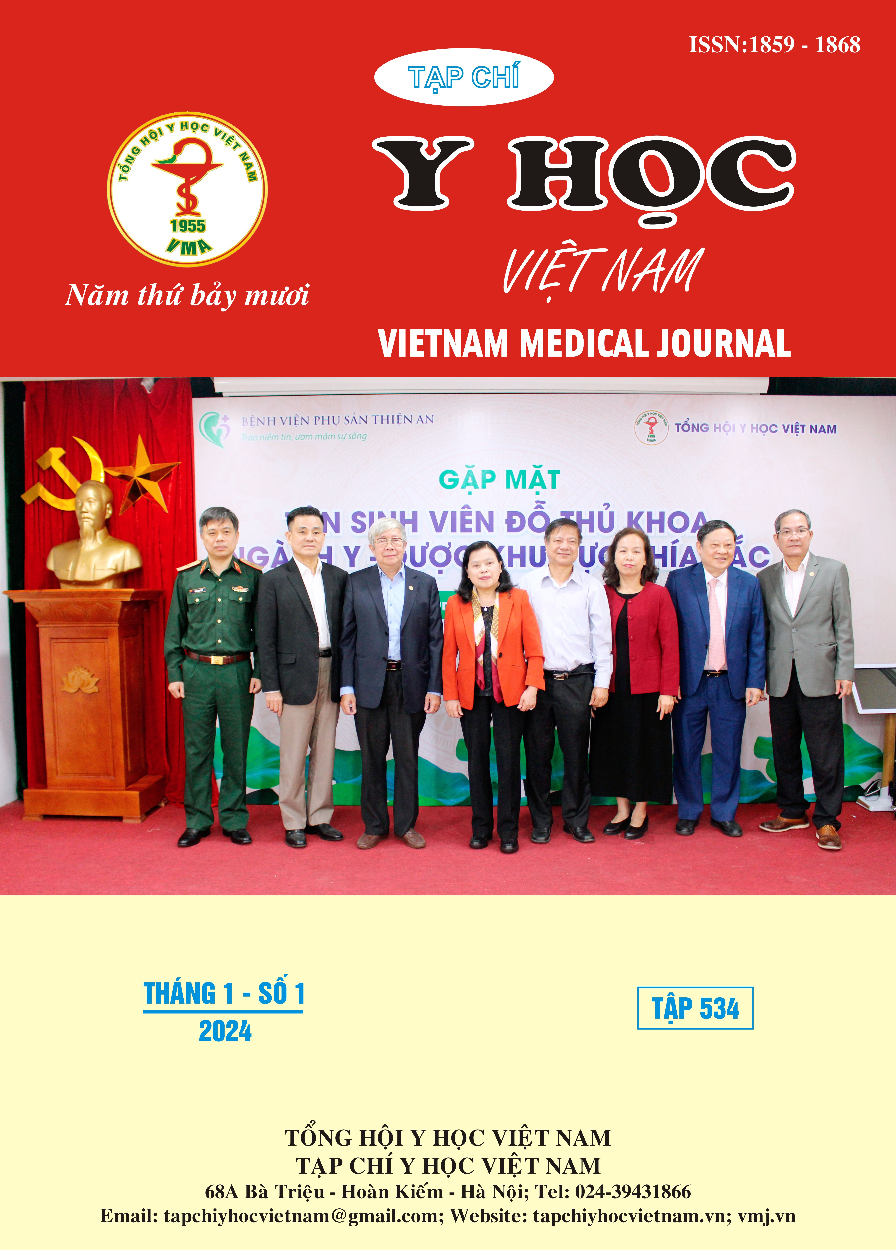INFLUENCE OF RISKY BEHAVIORS ON ORAL MUCOSAL LESIONS IN RESIDENTS AGED 40 AND ABOVE IN IAPA DISTRICT, GIA LAI PROVINCE
Main Article Content
Abstract
Objective: This study examined the relationship between high-risk habits and benign or potentially malignant oral mucosal lesions as well as oral cancer among a group of ethnic minorities aged 40 and above in Iapa district, Gia Lai province. Method: A descriptive cross-sectional study was conducted on ethnic minority groups aged 40 and above from 4 randomly selected regions in Iapa district, Gia Lai province. Data on age, gender, tooth brushing habits, smoking, alcohol consumption, and betel nut chewing were collected. Oral mucosal lesions were recorded and diagnosed by trained and standardized dentists. Data were entered and analyzed using Excel 2010 and SPSS 20.0. Results: 256 individuals participated in the study, with 75.8% having a smoking habit and 83.2% consuming alcohol. Individuals who smoked for 20 years or more or smoked more than 10 cigarettes per day had a higher risk of developing smoking-related oral mucositis than those who smoked less or did not smoke (p < 0.05). Individuals smoking for 20 years or more also had a significantly higher risk of developing potentially malignant oral mucosal lesions, 4.56 times higher than the remaining group (p = 0.039). Those with both smoking and alcohol consumption habits were 5.58 times more likely to develop potentially malignant oral mucosal lesions and oral cavity cancer than those without both habits (p = 0.012). Conclusion: High-risk habits such as smoking and alcohol consumption were prevalent among the community of research and were associated with smoking-related oral mucositis as well as potentially malignant oral mucosal lesions and oral cancer.
Article Details
References
2. Nguyễn Phan Thế Huy, Trần Ngọc Liên, Nguyễn Đức Tuấn, Trần Minh Cường, Võ Đắc Tuyến, Nguyễn Thị Nguyệt Ánh, Nguyễn Thị Hồng (2017), “Phát hiện tổn thương niêm mạc miệng trên nhóm nguy cơ cao tại Tp.HCM bằng khám lâm sàng và nghiệm pháp tự phát huỳnh quang”, Tạp chí Y học thành phố Hồ Chí Minh, phụ bản tập 21, số 2, tr.138-144.
3. Ngô Đồng Khanh (2000), Tổn thương tiền ung thư và ung thư miệng ở miền Nam Việt Nam: khảo sát dịch tễ và phân tích các yếu tố nguy cơ, Luận án Tiến sĩ Y học, Đại học Y Dược Tp.HCM.
4. Chher T., Hak S., Kallarakkal T. G., et al. (2018), “Prevalence of oral cancer, oral potentially malignant disorders and other oral mucosal lesions in Cambodia”, Ethn Health, 23, pp.1-15.
5. Chung C.H., Yang Y.H., Wang T.Y, Shieh T.Y., Warnakulasuriya S. (2005), “Oral precancerous disorders associated with areca betel chewing, smoking and alcohol drinking in southern Taiwan”, J Oral Pathol Med, 34, pp. 460-6.
6. Ghanaei F.M., Joukar F., Rabiei M., Dadashzadeh A., Kord Valeshabad A. (2013), "Prevalence of oral mucosal lesions in an adult Iranian population", Iran Red Crescent Med J, 15(7), pp.600-4.
7. Pentenero M., Broccoletti R., Carbone M., Conrotto D., Gandolfo S. (2008), “The prevalence of oral mucosal lesions in aldults from the Turin area”, Oral Diseases, 14, pp.356-366.
8. Warnakulasuriya S. (2009), “Global epidemiology of oral and oropharyngeal cancer”, Oral Oncol, 45, pp.309-16.


